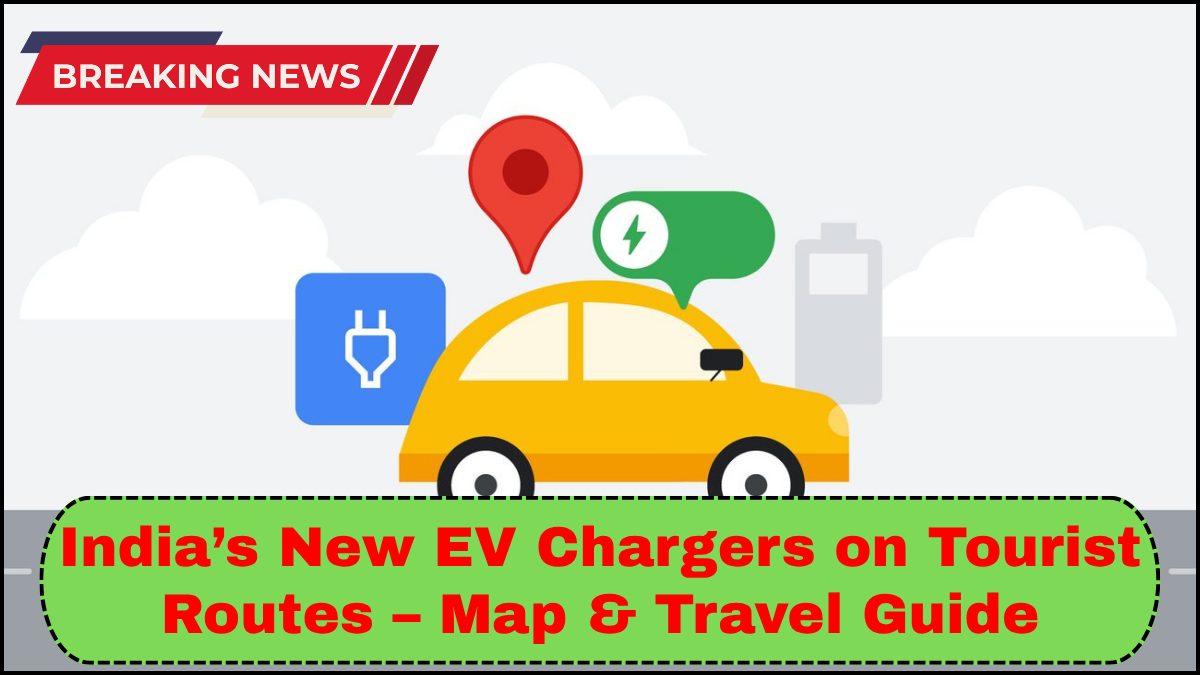India is accelerating its electric vehicle (EV) infrastructure, and the latest push focuses on highway EV charging along popular tourist corridors. For EV drivers planning road trips, this is a game-changer. The government and private operators are working in tandem to roll out fast-charging stations across key national highways and scenic destinations. The goal: make electric travel reliable, convenient, and stress-free.
This guide breaks down the latest developments, shows you how to plan your route with ease, and highlights where to find these chargers across India’s most traveled tourist routes.

Why Highway EV Charging Matters for Travelers
Highway EV charging is crucial for long-distance EV travel. While cities are seeing rapid EV charger installations, rural and remote areas have been slower to adapt. Tourists driving electric vehicles on popular routes like Delhi to Manali, Mumbai to Goa, or Bangalore to Ooty often worry about range anxiety.
The introduction of highway charging stations helps eliminate that concern. These chargers, often strategically placed every 40–60 km, allow drivers to recharge during short breaks. Most of them support fast-charging standards like CCS2 and CHAdeMO, enabling 80% charge in 30–60 minutes depending on the vehicle model.
EV Charging Infrastructure: What’s New?
In 2024 and 2025, several initiatives have drastically improved the highway EV charging landscape in India:
-
NHAI & PowerGrid have launched charging plazas on expressways like Delhi–Jaipur, Delhi–Agra (Yamuna Expressway), and Ahmedabad–Vadodara.
-
Oil marketing companies (OMCs) like Indian Oil, HPCL, and BPCL have integrated EV chargers into their fuel stations along tourist highways.
-
Private players such as Tata Power, Statiq, and Ather Grid are deploying chargers at restaurants, hotels, and rest areas along major routes.
-
Dedicated EV zones are being planned near heritage destinations like Hampi, Khajuraho, and Ajanta–Ellora to promote green tourism.
Top Tourist Routes with New EV Chargers
Here’s a snapshot of tourist routes where highway EV charging is already available or expanding rapidly:
1. Delhi – Agra – Jaipur (Golden Triangle)
With fast chargers installed along the Yamuna and Delhi-Jaipur Expressways, this route is now EV-friendly. Most stations are near food courts and petrol pumps, making it convenient to recharge during meal breaks.
2. Mumbai – Pune – Goa
A string of EV chargers now dots the NH66 coastal route. Recharge in Lonavala, Satara, Kolhapur, and Ratnagiri. For those taking the scenic route to Goa, EV travel is now fully supported.
3. Bangalore – Mysore – Ooty
Karnataka’s EV policy has accelerated installations here. Mysore Ring Road and Bandipur have functioning fast chargers, and more are being added near Masinagudi and Ooty.
4. Chennai – Pondicherry – Rameswaram
Tourists traveling to Pondy or further south will find new stations at Mahabalipuram, Chidambaram, and Karaikal. Fast-charging points are now active in Madurai and Rameswaram as well.
5. Manali – Leh – Srinagar (Himalayan Circuit)
This adventure route is also seeing EV upgrades. Chargers are live in Manali, Keylong, Kargil, and Leh. While sparse, these are high-power stations, often solar-powered, catering to tourists exploring Ladakh sustainably.
Route Planning Tips for EV Travelers
Route planning is key when traveling by EV. Here are some tips to make it seamless:
-
Use apps like PlugShare, Tata EZ Charge, or Statiq to locate nearby chargers and check real-time availability.
-
Always top up before hitting isolated stretches, especially in hilly or remote areas.
-
Plan for backup options. Keep a Level 1 charger in the boot for emergencies at homestays or hotels.
-
Book hotels with charging points. Many resorts are adding this amenity, especially in tourist-centric towns.
-
Track elevation. Driving uphill drains batteries faster. Know where your next downhill is, and plan charging accordingly.
Benefits of EV Tourism
With more highway EV charging stations, India is paving the way for sustainable travel. Benefits include:
-
Reduced carbon footprint during holidays.
-
Cost-effective long-distance travel.
-
Boost to eco-tourism and green infrastructure.
-
Increased business for roadside vendors and facilities offering EV services.
Future Plans: What’s Coming Next?
The Ministry of Heavy Industries is targeting over 22,000 EV charging stations by 2030, with a large share to be built along NH corridors. Highways like Delhi–Katra, Lucknow–Varanasi, and Mumbai–Ahmedabad are next in line. Additionally, smart chargers with solar-battery backups will become more common in remote, off-grid areas.
Expect route planning to become even more effortless as India’s EV ecosystem matures.
FAQs
Q1: How do I locate highway EV charging stations in India?
Use mobile apps like PlugShare, Tata Power EZ Charge, and Statiq. These apps show location, connector types, and availability in real time.
Q2: Are there fast chargers on tourist routes?
Yes. Most major tourist corridors now feature DC fast chargers supporting CCS2 and CHAdeMO connectors, capable of delivering 50–120 kW power.
Q3: Can I do a road trip from Delhi to Goa in an EV?
Absolutely. With the growing network of highway EV charging stations, long routes like Delhi to Goa are increasingly viable, though planning is essential.
Q4: Is route planning different for EVs compared to petrol vehicles?
Yes. EV route planning requires factoring in charger availability, charging time, terrain, and vehicle range. However, with the right apps and some preparation, it’s hassle-free.
Q5: Are there any government incentives for EV tourists?
Some states offer free or discounted EV charging at tourist locations, while a few eco-tourism initiatives provide exclusive parking and accommodation benefits for EV travelers.
click here to learn more